|
Classic Ma Bell
Telephone Films from the 20's to 70's
2 DVD set!
An original production published by
The Classic Archives! |
|
Watch how the
telephone went from a novelty to a piece of modern day life
from 1920 to present day. This collection of films
totals 20 different productions. The films on these
two DVD's run almost 5 hours. A must have for the
historian or anyone who has worked in the telephone industry
or is interested in telephone history. Great for
educators and students alike. A very rare set
published by The Classic Archives only!
Each DVD comes with a fully interactive
menu. This set includes the following films: |
|
DVD
1 |
| Century 21 Calling (1964)
Romp through the futuristic
landscape of the Seattle World's Fair, centered in the Bell
System pavilion.
Sound, Color, 13:56
   |
|
Development of
Communication (1927)
Venerable educational film showing technologies of
communication, circa 1920s.
Silent, B&W, 13:04
   |
|
Communication (1928)
Interesting animated
instructional film detailing electronic communications in
the early part of the century. Interestingly enough, the
popular vocational school DeVry claims that they began as a
school in 1931, with no mention of the production of these
informational films as early as (in the case of this film)
1928.
Silent, B&W, 19:28
   |
|
Far Speaking (ca. 1935)
History of telephone development
from 1877 to 1935.
Sound, B&W, 11:11
   |
|
Just Imagine (1947)
Animated character "Tommy
Telephone" produces a telephone by assembling 433 separate
parts.
Sound, B&W, 10:27
   |
|
How to Use the Dial Phone
(1927) Training film
for users of the new dial telephones.
Silent, B&W, 7:06
   |
|
Mr. Bell (1947)
Dramatization of the invention
of the telephone.
2 Part, Sound, B&W, 30:28
  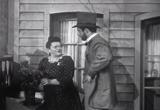 |
|
The Nation at Your
Fingertips (1951) How
direct long distance dialing made the U.S. a smaller place,
and how instantaneous direct communication between Americans
without operator assistance became possible.
Sound, B&W, 10:53
  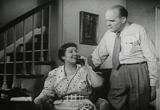 |
|
Once Upon a Honeymoon
(1956) Delightful
musical made to promote color telephones as a decorator
accessory in the home.
Sound, Color, 14:28
   |
|
Operator Toll Dialing:
Cord Signals (ca. 1949)
Instructional film for telephone
operators.
Sound, B&W, 3:21
  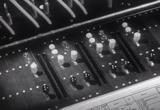 |
|
Operator Toll Dialing:
Dialing (ca. 1949)
Instructional film for telephone operators.
Sound, B&W, 6:18
   |
|
DVD
2 |
|
Operator Toll Dialing:
Teamwork (ca. 1949)
Instructional film for telephone operators emphasizing
on-the-job cooperation.
Sound, B&W, 3:22
   |
|
Plane Talk (1965)
Shows the varied forms of
communications used by commercial air carriers in confirming
reservations, preparing aircraft for flight, monitoring
aircraft in flight and maintaining air-to-ground contact.
With good imagery of passenger airline operations at the
moment when air travel was just becoming a mass phenomenon.
Sound, Color, 21:58
  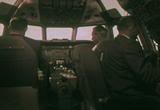 |
|
Speeding Speech (ca.
1950s) Automation in
the telephone industry dispenses with operator long distance
dialing to complete calls faster.
Sound, B&W, 10:06
   |
|
Story Without
End (1950) Postwar
expansion of telephone service made possible by development
of microwave radio transmission and the transistor.
Sound, B&W, 18:32
   |
|
Telephone and Telegraph
(1946)
Telecommunications workers in the analog era. Late
40's vocational film covering the careers in telegraph and
telephone industries. Lots of shots of analog
telecommunications equipment, along with mention of early
radio-telephone and facsimile machines. What I found
interesting is how up front gender divided the roles were
(women as operators and teletype operators where a high
school education would be "useful"; men as couriers,
engineers and managers, the later two urged to get a college
degree). It also appears that some of the footage, such as
the historical recreations of the late 19th century Western
Union office and Bell's telephone, probably came from other
industrial films.
Sound, B&W, 10:34
   |
|
The Big Bounce (1960)
The story of the Echo
communications satellite project, and how scientists learned
to bounce a radio signal off a big balloon. Written by
Robert Engel and Leo S. Rosencrans. Narrator: Larry Thor.
Producer and Photographer: Jerry Fairbanks. Editor: Richard
Fritch, ASC. Production Manager: John McKennon. Assistant
Director: Robert Scrivner. Musical Direction: Edward Paul.
Original Score: Gene Kauer. Sound: Lawrence Aicholtz.
Lighting: Grant Spicer.
Sound, Color, 14:23
   |
|
The Town and the
Telephone (ca. late 1950s)
Employee orientation film for
telephone company workers explaining structure and corporate
values of the Bell System. With excellent footage of
communications workers and everyday life, in Technicolor.
Sound, Color, 27:22
 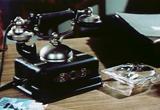  |
|
We Learn About the
Telephone (1965) A
young man sketches a generic human ("Mr. Man") who takes
us back through history to show us how humans developed a
need to communicate and the devices to do so. Then shows us
how telephones enable the modern mid-Sixties world.
Part-animated by the master John Hubley.
Sound, Color, 22:32
   |
|
You Can Tell by the
Teller (1945)
Instructional film for telephone business office cashiers
(tellers) who interact with the public, with a heavy dose of
period sexism.
Sound, B&W, 18:41
 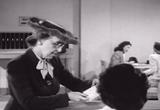  |
|
DVD Menu Sampler:
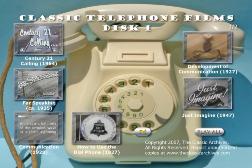 |









